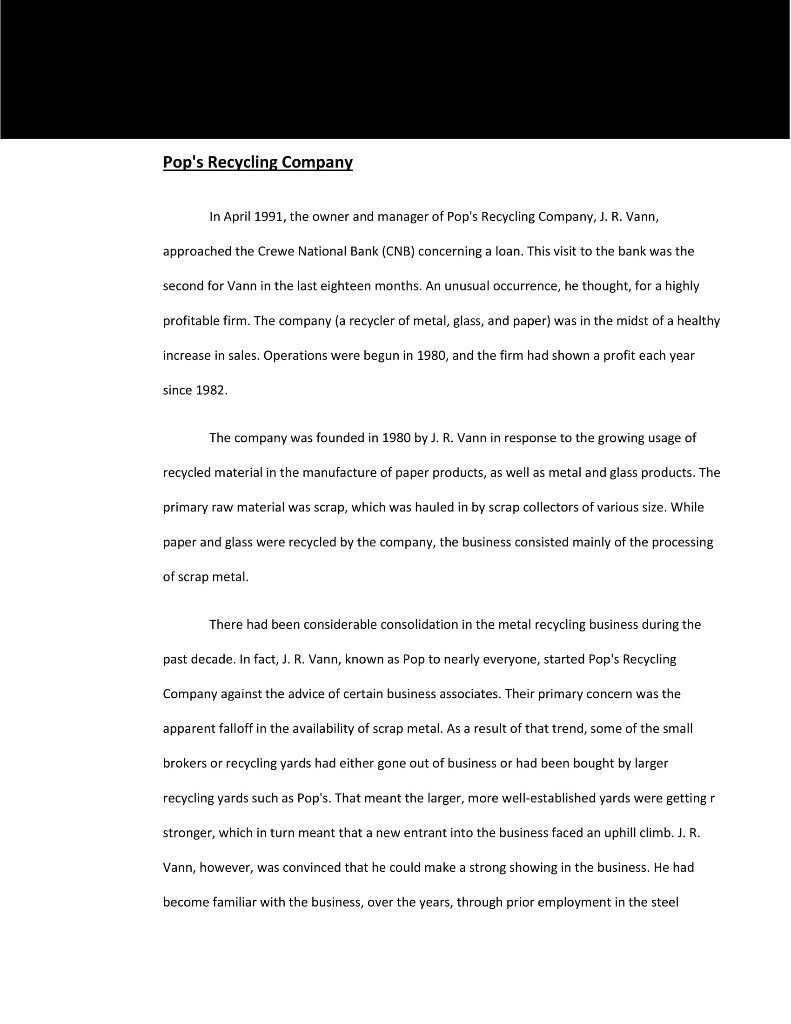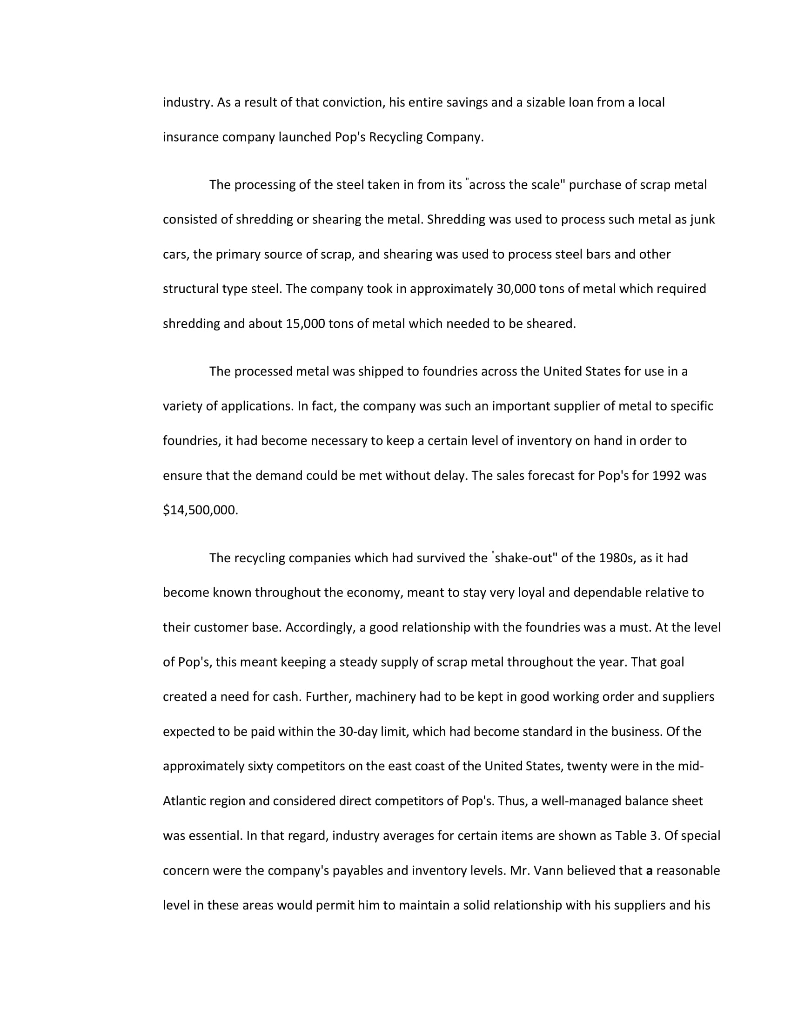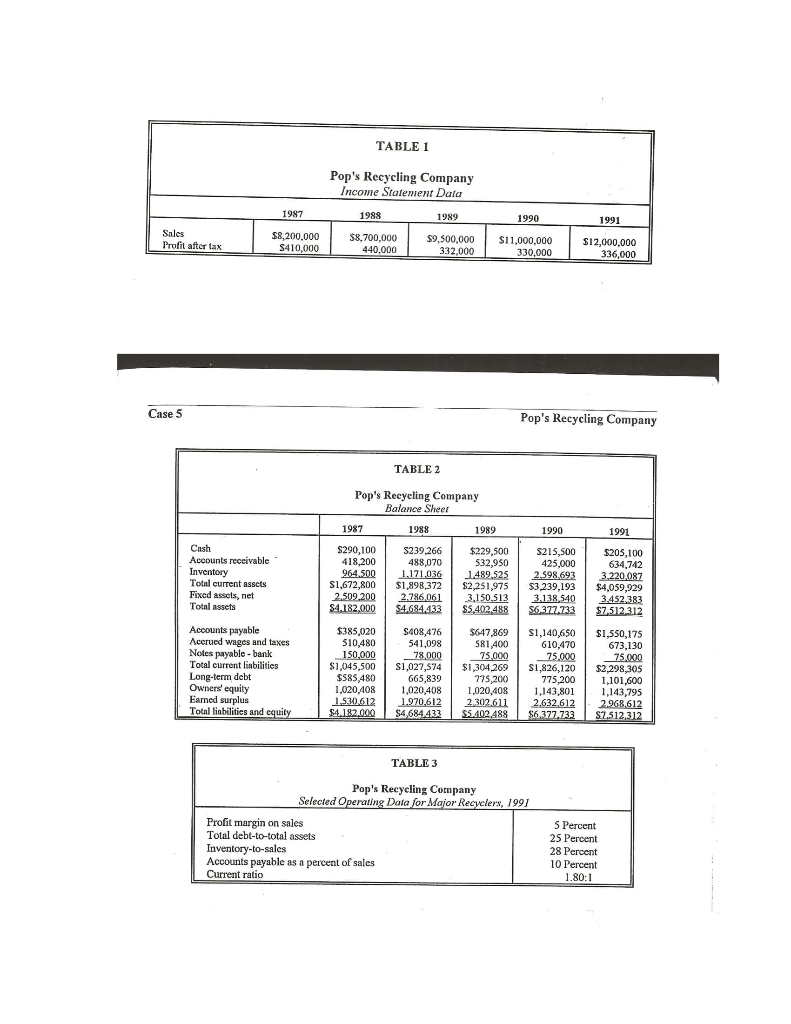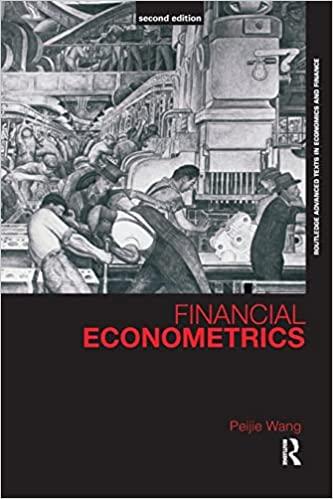Question
1) Please analyze the financial condition of the company; under the following categories: -profitability -asset utilization/activity -debt management -liquidity 2) Calculate the Additional Funds Needed




1) Please analyze the financial condition of the company; under the following categories:
-profitability
-asset utilization/activity
-debt management
-liquidity
2) Calculate the Additional Funds Needed (AFN) for the company, to achieve the projected sales, using the percent of sales method.
3) If the bank decided to require the company to maintain a current ratio of 2.0 as a condition of its loan, how will the projected balance sheet for 1992 change?
Please construct the new projected balance sheet, clearly indicating the changes.
4) What are the specific options available to the company for meeting its need for additional funds if
a) the bank provided a loan of $200,000 as sought by the company
b) the bank declined the loan request
Please justify your selected options, clearly indicate and quantify them, and construct the pro-forma balance sheet for both situations.
Pop's Recycling Company In April 1991, the owner and manager of Pop's Recycling Company, J. R. Vann, approached the Crewe National Bank (CNB) concerning a loan. This visit to the bank was the second for Vann in the last eighteen months. An unusual occurrence, he thought, for a highly profitable firm. The company (a recycler of metal, glass, and paper) was in the midst of a healthy increase in sales. Operations were begun in 1980, and the firm had shown a profit each year since 1982 The company was founded in 1980 by J. R. Vann in response to the growing usage of recycled material in the manufacture of paper products, as well as metal and glass products. The primary raw material was scrap, which was hauled in by scrap collectors of various size. While paper and glass were recycled by the company, the business consisted mainly of the processing of scrap metal. There had been considerable consolidation in the metal recycling business during the past decade. In fact, J. R. Vann, known as Pop to nearly everyone, started Pop's Recycling Company against the advice of certain business associates. Their primary concern was the apparent falloff in the availability of scrap metal. As a result of that trend, some of the small brokers or recycling yards had either gone out of business or had been bought by larger recycling yards such as Pop's. That meant the larger, more well-established yards were gettingr stronger, which in turn meant that a new entrant into the business faced an uphill climb. J. R. Vann, however, was convinced that he could make a strong showing in the business. He had become familiar with the business, over the years, through prior employment in the steel industry. As a result of that conviction, his entie savings and a sizable loan from a local insurance company launched Pop's Recycling Company. The processing of the steel taken in from its across the scale" purchase of scrap metal consisted of shredding or shearing the metal. Shredding was used to process such metal as junk cars, the primary source of scrap, and shearing was used to process steel bars and other structural type steel. The company took in approximately 30,000 tons of metal which required shredding and about 15,000 tons of metal which needed to be sheared The processed metal was shipped to foundries across the United States for use in a variety of applications. In fact, the company was such an important supplier of metal to specific foundries, it had become necessary to keep a certain level of inventory on hand in order to ensure that the demand could be met without delay. The sales forecast for Pop's for 1992 was $14,500,000 The recycling companies which had survived the 'shake-out" of the 1980s, as it had become known throughout the economy, meant to stay very loyal and dependable relative to their customer base. Accordingly, a good relationship with the foundries was a must. At the level of Pop's, this meant keeping a steady supply of scrap metal throughout the year. That goal created a need for cash. Further, machinery had to be kept in good working order and suppliers expected to be paid within the 30-day limit, which had become standard in the business. Of the approximately sixty competitors on the east coast of the United States, twenty were in the mid Atlantic region and considered direct competitors of Pop's. Thus, a well-managed balance sheet was essential. In that regard, industry averages for certain items are shown as Table 3. Of special concern were the company's payables and inventory levels. Mr. Vann believed that a reasonable level in these areas would permit him to maintain a solid relationship with his suppliers and his customers. Vann believed that his long term debt would be constant, that is, would remain at its present level. In addition, he hoped to move the profit nearer to the industry average level, or beyond. The loan which Mr. Vann sought from CNB was for the purpose of increasing the company's stock of scrap metal. In recent months, a large portion of railroad track and rolling stock was being dismantled at certain points in the immediate region, and an unusually large supply of steel had become available. These "bulges" in the incoming supply of scrap metal were a typical occurrence. It provided the recycling companies an opportunity to build up their backlog of steel and other metals. Such a supply would be used to feed the emerging and successful new, smaller steel companies in the United States. The cold-roll production process used by foundries had given some hope to the once flagging steel industry) In order to properly manage the situation, Vann considered a loan of $200,000 to be adequate for his short-term needs. The financial statements which follow illustrate certain aspects of the company's operating history The bank's loan officer, Cheryl Fries, wanted to make the correct and appropriate decision. Pop's Recycling had a long-standing reputation as a well-run company. In addition, her informal grapevine indicated that Vann handled his credits well. If the analysis of the company's financial statements bore out these impressions, the bank would have gained another solid commercial customer. The essential questions which Fries wanted to answer related to the necessity of the loan, the size of the loan, and if it were actually needed. She began an analysis of the company's needs based upon their audited financial statements shown as Tables 1 and 2 and competitor information in Table 3 (next page) TABLE 1 Pop's Recycling Company Income Statement Data 1987 1988 1989 1990 1991 Sales Profit after tax 00000 8.700,0000,000 1000,000 S12,000,000 S410,000 440,000 332,000 330,000 336,000 Case 5 Pop's Recycling Company TABLE 2 Pop's Recyeling Company Balance Sheet 1987 1988 1990 1991 S290,00 239266s229.500s215,s00 s205,100 532,950 96450011710361489.525 298693 3220,087 S1,672,800S1,898372 2,217 S3,239,193$4,059,929 2.509,2002786061 31505133138540 3452,383 412,00 $4.684433 S5402488S6377733 7512.312 Cnsh Accounts reccivable 418,200 425,000 634,742 asscts Accounts payable Accrued wages and taxes Notes payable bank Total current linbilities Long-term debt Owners' equity Earned surplus Tolal linbilities and $385,020408,47647869S1,140,650$1.550,175 5410988610470 150,00078,000 5,005,0005.000 S1,045,500S1,027,574304269 S1,826,120$2,298,30s 775,200 1,020,4081,020,408 1,020,408 1,143,8011,143,795 15306121970612230261 2632612298612 4.182.000$4,684433$5402.488$6377 733 $7.512,312 510,480 673,130 $585,480 665,839 775,200,101,600 TABLE3 Pop's Recyeling Company Selected Operating Data orajor Recyclers, 1991 Profit margin on sales Total debt-to-total assets Inventory-to-sales Accounts payable as a percent of sales Percent 25 Percent 28 Percent 10 Percent Current ratio 1.80:1 Pop's Recycling Company In April 1991, the owner and manager of Pop's Recycling Company, J. R. Vann, approached the Crewe National Bank (CNB) concerning a loan. This visit to the bank was the second for Vann in the last eighteen months. An unusual occurrence, he thought, for a highly profitable firm. The company (a recycler of metal, glass, and paper) was in the midst of a healthy increase in sales. Operations were begun in 1980, and the firm had shown a profit each year since 1982 The company was founded in 1980 by J. R. Vann in response to the growing usage of recycled material in the manufacture of paper products, as well as metal and glass products. The primary raw material was scrap, which was hauled in by scrap collectors of various size. While paper and glass were recycled by the company, the business consisted mainly of the processing of scrap metal. There had been considerable consolidation in the metal recycling business during the past decade. In fact, J. R. Vann, known as Pop to nearly everyone, started Pop's Recycling Company against the advice of certain business associates. Their primary concern was the apparent falloff in the availability of scrap metal. As a result of that trend, some of the small brokers or recycling yards had either gone out of business or had been bought by larger recycling yards such as Pop's. That meant the larger, more well-established yards were gettingr stronger, which in turn meant that a new entrant into the business faced an uphill climb. J. R. Vann, however, was convinced that he could make a strong showing in the business. He had become familiar with the business, over the years, through prior employment in the steel industry. As a result of that conviction, his entie savings and a sizable loan from a local insurance company launched Pop's Recycling Company. The processing of the steel taken in from its across the scale" purchase of scrap metal consisted of shredding or shearing the metal. Shredding was used to process such metal as junk cars, the primary source of scrap, and shearing was used to process steel bars and other structural type steel. The company took in approximately 30,000 tons of metal which required shredding and about 15,000 tons of metal which needed to be sheared The processed metal was shipped to foundries across the United States for use in a variety of applications. In fact, the company was such an important supplier of metal to specific foundries, it had become necessary to keep a certain level of inventory on hand in order to ensure that the demand could be met without delay. The sales forecast for Pop's for 1992 was $14,500,000 The recycling companies which had survived the 'shake-out" of the 1980s, as it had become known throughout the economy, meant to stay very loyal and dependable relative to their customer base. Accordingly, a good relationship with the foundries was a must. At the level of Pop's, this meant keeping a steady supply of scrap metal throughout the year. That goal created a need for cash. Further, machinery had to be kept in good working order and suppliers expected to be paid within the 30-day limit, which had become standard in the business. Of the approximately sixty competitors on the east coast of the United States, twenty were in the mid Atlantic region and considered direct competitors of Pop's. Thus, a well-managed balance sheet was essential. In that regard, industry averages for certain items are shown as Table 3. Of special concern were the company's payables and inventory levels. Mr. Vann believed that a reasonable level in these areas would permit him to maintain a solid relationship with his suppliers and his customers. Vann believed that his long term debt would be constant, that is, would remain at its present level. In addition, he hoped to move the profit nearer to the industry average level, or beyond. The loan which Mr. Vann sought from CNB was for the purpose of increasing the company's stock of scrap metal. In recent months, a large portion of railroad track and rolling stock was being dismantled at certain points in the immediate region, and an unusually large supply of steel had become available. These "bulges" in the incoming supply of scrap metal were a typical occurrence. It provided the recycling companies an opportunity to build up their backlog of steel and other metals. Such a supply would be used to feed the emerging and successful new, smaller steel companies in the United States. The cold-roll production process used by foundries had given some hope to the once flagging steel industry) In order to properly manage the situation, Vann considered a loan of $200,000 to be adequate for his short-term needs. The financial statements which follow illustrate certain aspects of the company's operating history The bank's loan officer, Cheryl Fries, wanted to make the correct and appropriate decision. Pop's Recycling had a long-standing reputation as a well-run company. In addition, her informal grapevine indicated that Vann handled his credits well. If the analysis of the company's financial statements bore out these impressions, the bank would have gained another solid commercial customer. The essential questions which Fries wanted to answer related to the necessity of the loan, the size of the loan, and if it were actually needed. She began an analysis of the company's needs based upon their audited financial statements shown as Tables 1 and 2 and competitor information in Table 3 (next page) TABLE 1 Pop's Recycling Company Income Statement Data 1987 1988 1989 1990 1991 Sales Profit after tax 00000 8.700,0000,000 1000,000 S12,000,000 S410,000 440,000 332,000 330,000 336,000 Case 5 Pop's Recycling Company TABLE 2 Pop's Recyeling Company Balance Sheet 1987 1988 1990 1991 S290,00 239266s229.500s215,s00 s205,100 532,950 96450011710361489.525 298693 3220,087 S1,672,800S1,898372 2,217 S3,239,193$4,059,929 2.509,2002786061 31505133138540 3452,383 412,00 $4.684433 S5402488S6377733 7512.312 Cnsh Accounts reccivable 418,200 425,000 634,742 asscts Accounts payable Accrued wages and taxes Notes payable bank Total current linbilities Long-term debt Owners' equity Earned surplus Tolal linbilities and $385,020408,47647869S1,140,650$1.550,175 5410988610470 150,00078,000 5,005,0005.000 S1,045,500S1,027,574304269 S1,826,120$2,298,30s 775,200 1,020,4081,020,408 1,020,408 1,143,8011,143,795 15306121970612230261 2632612298612 4.182.000$4,684433$5402.488$6377 733 $7.512,312 510,480 673,130 $585,480 665,839 775,200,101,600 TABLE3 Pop's Recyeling Company Selected Operating Data orajor Recyclers, 1991 Profit margin on sales Total debt-to-total assets Inventory-to-sales Accounts payable as a percent of sales Percent 25 Percent 28 Percent 10 Percent Current ratio 1.80:1Step by Step Solution
There are 3 Steps involved in it
Step: 1

Get Instant Access to Expert-Tailored Solutions
See step-by-step solutions with expert insights and AI powered tools for academic success
Step: 2

Step: 3

Ace Your Homework with AI
Get the answers you need in no time with our AI-driven, step-by-step assistance
Get Started


